
 Since Google launched the first Android phone in 2008, the internet world has entered the fast lane. Android and iOS have been in a fierce competition, showcasing the power of small smartphones and giving rise to the mobile internet industry, which has dramatically transformed the real world. Throughout these years, an American company has accompanied Android to this day, experiencing significant changes as well.
Since Google launched the first Android phone in 2008, the internet world has entered the fast lane. Android and iOS have been in a fierce competition, showcasing the power of small smartphones and giving rise to the mobile internet industry, which has dramatically transformed the real world. Throughout these years, an American company has accompanied Android to this day, experiencing significant changes as well. Qualcomm, witnessing everything that has happened in the smartphone era. In the early days of smartphones, new devices emerged from various manufacturers, and chip technology was budding from multiple sources. At that time, no single company held a significant market share, as the market was still small, but the development direction was already clear: the semi-smartphones led by Nokia were becoming obsolete, and Android was on the rise. Even though its form and functions were still immature, it was clear that it would replace the Symbian system. Qualcomm launched its first Snapdragon chip as early as 2007, witnessing the two major camps of Android and Windows Phone evolve from a two-horse race to a single survivor. The earliest product in the Snapdragon S series, the Snapdragon S1 chip, had a maximum base frequency of only 1GHz and was single-core. At that time, the focus was primarily on the CPU, with no dedicated graphics processors, but many mainstream devices chose it, such as the HTC Wildfire and LG Optimus series.
Qualcomm, witnessing everything that has happened in the smartphone era. In the early days of smartphones, new devices emerged from various manufacturers, and chip technology was budding from multiple sources. At that time, no single company held a significant market share, as the market was still small, but the development direction was already clear: the semi-smartphones led by Nokia were becoming obsolete, and Android was on the rise. Even though its form and functions were still immature, it was clear that it would replace the Symbian system. Qualcomm launched its first Snapdragon chip as early as 2007, witnessing the two major camps of Android and Windows Phone evolve from a two-horse race to a single survivor. The earliest product in the Snapdragon S series, the Snapdragon S1 chip, had a maximum base frequency of only 1GHz and was single-core. At that time, the focus was primarily on the CPU, with no dedicated graphics processors, but many mainstream devices chose it, such as the HTC Wildfire and LG Optimus series. HTC Wildfire series, image source: Geekanoids. The continuous upgrade of hardware capabilities has been driving the enhancement of mobile application experiences, while mobile applications have also been pushing for hardware updates and iterations. In this regard, Qualcomm has been making proactive arrangements, such as acquiring AMD’s mobile graphics chip assets for $65 million in 2009, which was the predecessor of the Adreno GPU, laying the groundwork for the subsequent rise of mobile gaming. With Adreno, the Snapdragon S series achieved a higher level of integration in chipsets, leading to a leap in positioning and being adopted by more flagship phones. As Qualcomm Snapdragon continued to grow, more and more members joined the ranks, including Xiaomi. In 2011, Lei Jun, as the founder of Xiaomi, stood at the Beijing 798 Art Center and launched the first Xiaomi phone, with a roaring crowd below and tears in his eyes above.
HTC Wildfire series, image source: Geekanoids. The continuous upgrade of hardware capabilities has been driving the enhancement of mobile application experiences, while mobile applications have also been pushing for hardware updates and iterations. In this regard, Qualcomm has been making proactive arrangements, such as acquiring AMD’s mobile graphics chip assets for $65 million in 2009, which was the predecessor of the Adreno GPU, laying the groundwork for the subsequent rise of mobile gaming. With Adreno, the Snapdragon S series achieved a higher level of integration in chipsets, leading to a leap in positioning and being adopted by more flagship phones. As Qualcomm Snapdragon continued to grow, more and more members joined the ranks, including Xiaomi. In 2011, Lei Jun, as the founder of Xiaomi, stood at the Beijing 798 Art Center and launched the first Xiaomi phone, with a roaring crowd below and tears in his eyes above.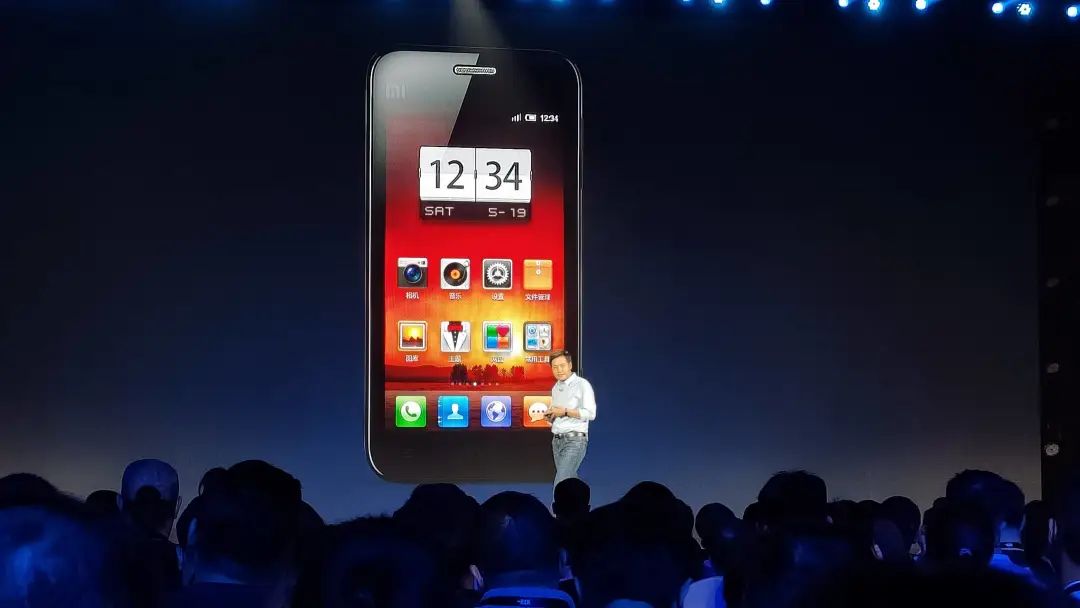 During the tenth anniversary speech of Xiaomi, Lei Jun reviewed the first-generation Xiaomi phone, which contained a Snapdragon chip, specifically the Snapdragon S2 chip. From that moment on, Snapdragon and Xiaomi became a pair of brands that achieved mutual success and progress. In the following years, the Snapdragon S series continued to advance, with process technology improving from 65nm to 28nm, core frequency rising to a maximum of 1.7GHz, and memory specifications evolving from LPDDR to dual-channel LPDDR2. Step by step, Qualcomm Snapdragon gradually established a foothold in the flagship domain. It was time to start the next phase. In early 2013, Qualcomm rebranded the S series, launching the Snapdragon 600 and other chipsets, marking the end of the S series.New Phase of the Former Flagship Platform: Snapdragon 600 (2013) The Snapdragon 600 chipset provided four Krait 300 cores, offering a 40% performance boost over the Snapdragon S4 Pro processor. This level of computing power was outstanding at the time, providing a platform for smartphone manufacturers to showcase their capabilities. It integrated Bluetooth 4.0, 802.11n/ac wireless networking, NFC, support for 1080P HD video recording, and DTS-HD and Dolby Digital enhancement technologies. From that point on, it became clear that Snapdragon’s development path was no longer simply about stacking CPU power and accumulating CPU cores, but rather blossoming in various areas, striving to become a versatile player. Meanwhile, Samsung and MediaTek even launched octa-core architectures, while Snapdragon calmly focused on addressing its weaknesses. Models equipped with the Snapdragon 600 chipset included: HTC One M7, Nexus 7, OPPO N1, and vivo Xplay.
During the tenth anniversary speech of Xiaomi, Lei Jun reviewed the first-generation Xiaomi phone, which contained a Snapdragon chip, specifically the Snapdragon S2 chip. From that moment on, Snapdragon and Xiaomi became a pair of brands that achieved mutual success and progress. In the following years, the Snapdragon S series continued to advance, with process technology improving from 65nm to 28nm, core frequency rising to a maximum of 1.7GHz, and memory specifications evolving from LPDDR to dual-channel LPDDR2. Step by step, Qualcomm Snapdragon gradually established a foothold in the flagship domain. It was time to start the next phase. In early 2013, Qualcomm rebranded the S series, launching the Snapdragon 600 and other chipsets, marking the end of the S series.New Phase of the Former Flagship Platform: Snapdragon 600 (2013) The Snapdragon 600 chipset provided four Krait 300 cores, offering a 40% performance boost over the Snapdragon S4 Pro processor. This level of computing power was outstanding at the time, providing a platform for smartphone manufacturers to showcase their capabilities. It integrated Bluetooth 4.0, 802.11n/ac wireless networking, NFC, support for 1080P HD video recording, and DTS-HD and Dolby Digital enhancement technologies. From that point on, it became clear that Snapdragon’s development path was no longer simply about stacking CPU power and accumulating CPU cores, but rather blossoming in various areas, striving to become a versatile player. Meanwhile, Samsung and MediaTek even launched octa-core architectures, while Snapdragon calmly focused on addressing its weaknesses. Models equipped with the Snapdragon 600 chipset included: HTC One M7, Nexus 7, OPPO N1, and vivo Xplay.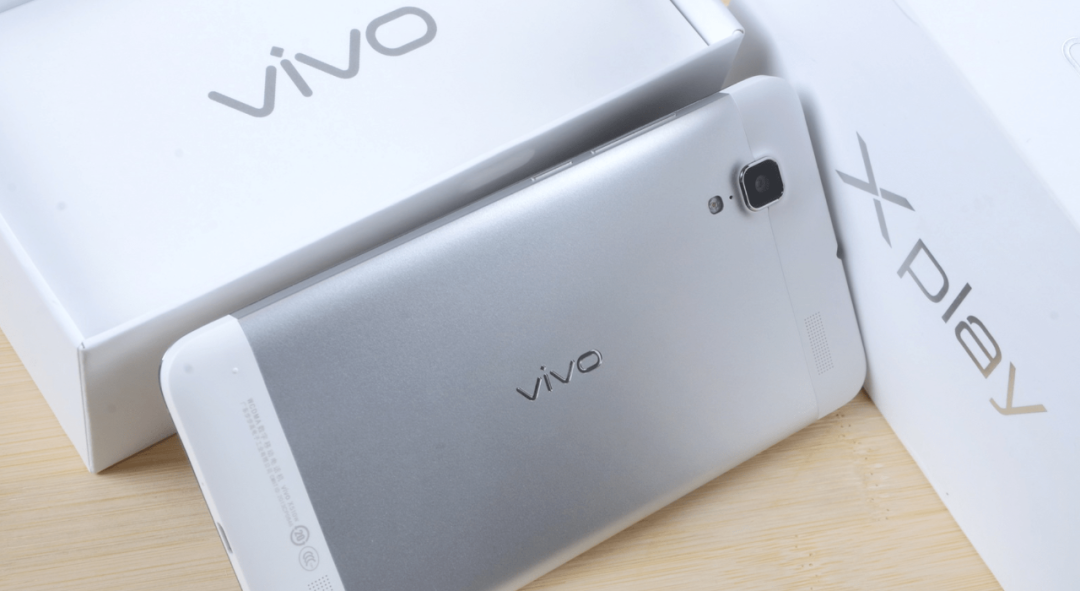 At that time, Android smartphone manufacturers began to explore different skill trees on the platform provided by Qualcomm Snapdragon, deriving routes such as “performance stream,” “image stream,” and “audio enthusiast stream.” Thus, the Android camp opened a differentiated roadmap, with “embracing openness” becoming a common topic for Android and Qualcomm Snapdragon. In the same year, another product line of Qualcomm Snapdragon was gearing up, preparing for its future, which was the Snapdragon 800 series.New Milestone for Snapdragon: Snapdragon 800/801/805 (2013-2014) The Snapdragon 800 series was born in January 2013, but it wasn’t until February of the following year that the Snapdragon 801 officially entered the public eye. Meanwhile, the Snapdragon 600 series was categorized into the high-end market. The Snapdragon 801 made some upgrades based on the Snapdragon 800, adopting a quad-core Krait 400 core design and Adreno 330 graphics processor, and also provided QC 2.0, LPDDR 3 memory, Bluetooth 4.0, and support for 2K resolution screens, even gaining the ability to record 4K video. Many classic models were born based on this chip, including LG G3, HTC One M8, Samsung Galaxy S4, Sony Xperia Z3, Xiaomi Mi 3, Smartisan T1, OPPO Find 7, and OnePlus One.
At that time, Android smartphone manufacturers began to explore different skill trees on the platform provided by Qualcomm Snapdragon, deriving routes such as “performance stream,” “image stream,” and “audio enthusiast stream.” Thus, the Android camp opened a differentiated roadmap, with “embracing openness” becoming a common topic for Android and Qualcomm Snapdragon. In the same year, another product line of Qualcomm Snapdragon was gearing up, preparing for its future, which was the Snapdragon 800 series.New Milestone for Snapdragon: Snapdragon 800/801/805 (2013-2014) The Snapdragon 800 series was born in January 2013, but it wasn’t until February of the following year that the Snapdragon 801 officially entered the public eye. Meanwhile, the Snapdragon 600 series was categorized into the high-end market. The Snapdragon 801 made some upgrades based on the Snapdragon 800, adopting a quad-core Krait 400 core design and Adreno 330 graphics processor, and also provided QC 2.0, LPDDR 3 memory, Bluetooth 4.0, and support for 2K resolution screens, even gaining the ability to record 4K video. Many classic models were born based on this chip, including LG G3, HTC One M8, Samsung Galaxy S4, Sony Xperia Z3, Xiaomi Mi 3, Smartisan T1, OPPO Find 7, and OnePlus One.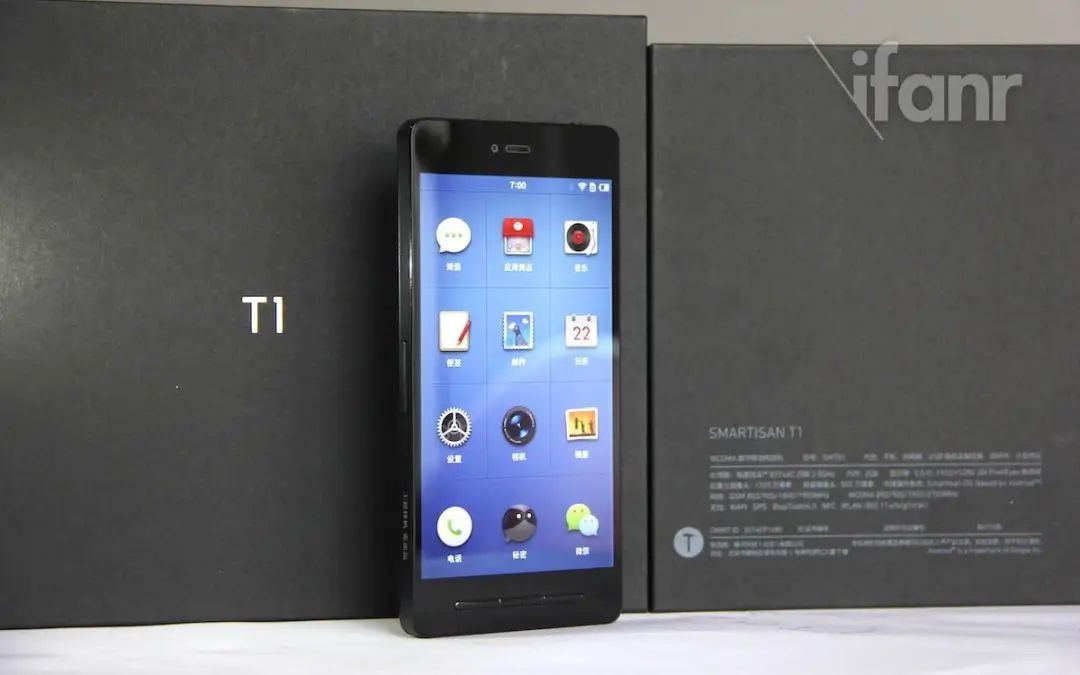 From this generation of computing platforms, we are fortunate to see more and more Chinese smartphone brands stepping onto the historical stage, and it won’t be long before they become the ace in the Android camp.Entering the 64-bit Era: Snapdragon 808/810 (2014) In 2014, Android welcomed the 64-bit era, thanks to Qualcomm updating the Snapdragon 808 and 810 SoCs using 20nm process technology. The Snapdragon 810 was the first flagship product to adopt an octa-core architecture (4 x Cortex-A75 + 4 x Cortex-A53), along with the Adreno 430 graphics processor. The Snapdragon 808, on the other hand, adopted a hexa-core architecture (2 x Cortex-A57 + 4 x Cortex-A53) and the Adreno 418 graphics processor.
From this generation of computing platforms, we are fortunate to see more and more Chinese smartphone brands stepping onto the historical stage, and it won’t be long before they become the ace in the Android camp.Entering the 64-bit Era: Snapdragon 808/810 (2014) In 2014, Android welcomed the 64-bit era, thanks to Qualcomm updating the Snapdragon 808 and 810 SoCs using 20nm process technology. The Snapdragon 810 was the first flagship product to adopt an octa-core architecture (4 x Cortex-A75 + 4 x Cortex-A53), along with the Adreno 430 graphics processor. The Snapdragon 808, on the other hand, adopted a hexa-core architecture (2 x Cortex-A57 + 4 x Cortex-A53) and the Adreno 418 graphics processor.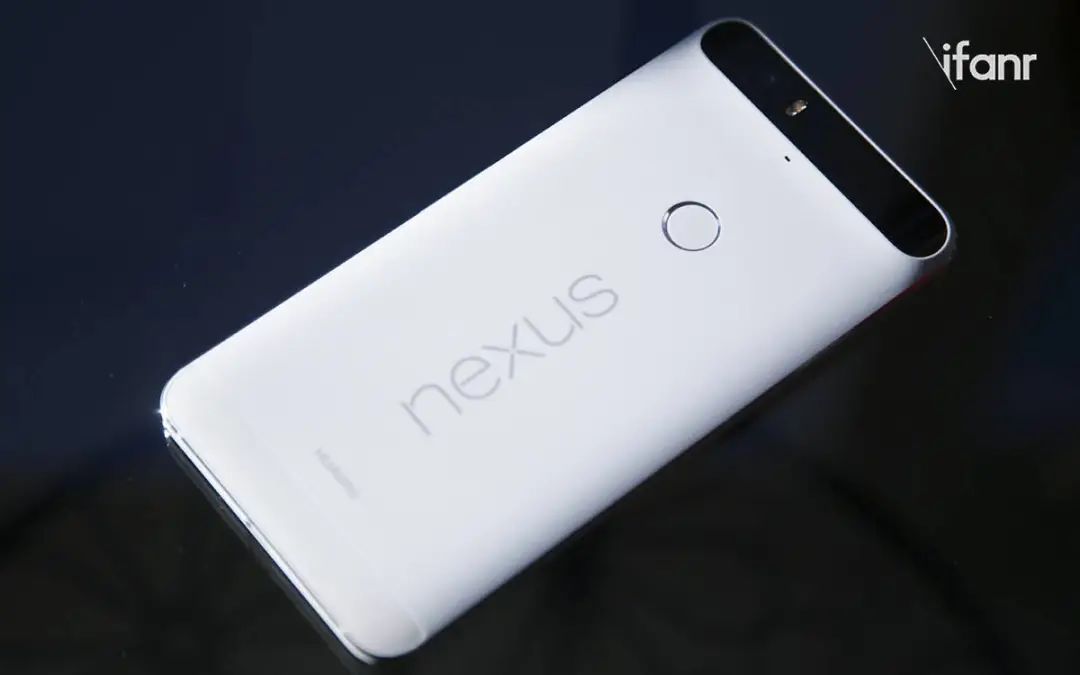 Nexus 6P manufactured by Huawei.Reputation Masterpiece: Snapdragon 820/821 (2015) In 2015, Qualcomm launched the Snapdragon 820 series, introducing a new custom CPU architecture called Kryo, using Samsung’s 14nm process technology and a quad-core (2+2) design. By increasing core frequencies, overall performance was enhanced, while the number of cores was reduced, leading to better power control. The Adreno 530 graphics processor used in this generation achieved a 40% performance improvement over the previous generation, while also compressing power consumption to a similar level, significantly enhancing gaming performance. That year, Qualcomm championed heterogeneous computing, integrating the Hexagon 680 DSP (Digital Signal Processor) into the Snapdragon 820, offloading some tasks from the CPU and GPU, including computer vision, motion sensors, and some image processing tasks, effectively reducing the overall power consumption of the SoC.
Nexus 6P manufactured by Huawei.Reputation Masterpiece: Snapdragon 820/821 (2015) In 2015, Qualcomm launched the Snapdragon 820 series, introducing a new custom CPU architecture called Kryo, using Samsung’s 14nm process technology and a quad-core (2+2) design. By increasing core frequencies, overall performance was enhanced, while the number of cores was reduced, leading to better power control. The Adreno 530 graphics processor used in this generation achieved a 40% performance improvement over the previous generation, while also compressing power consumption to a similar level, significantly enhancing gaming performance. That year, Qualcomm championed heterogeneous computing, integrating the Hexagon 680 DSP (Digital Signal Processor) into the Snapdragon 820, offloading some tasks from the CPU and GPU, including computer vision, motion sensors, and some image processing tasks, effectively reducing the overall power consumption of the SoC.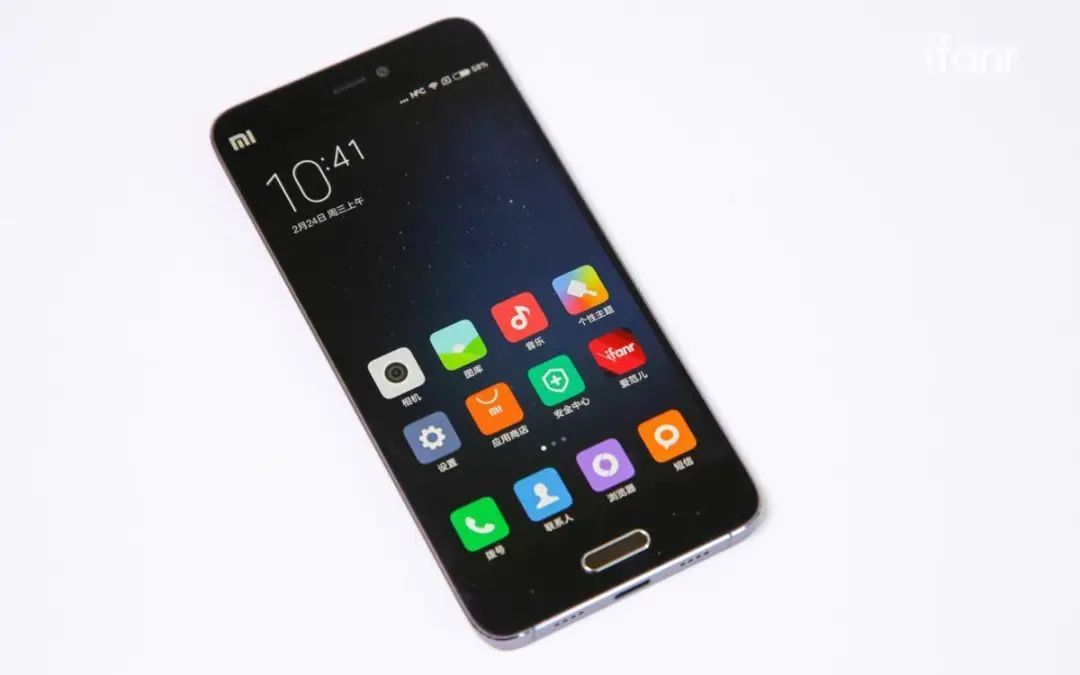 Xiaomi 5. This concept seems common today, but at that time it was a significant innovation. It was also from that time that Google Pixel’s artificial intelligence became a major selling point of the series, partly thanks to Qualcomm Snapdragon’s heterogeneous computing strategy. It was also from this time that System on Chips (SoCs) began to take center stage. The Snapdragon 820 integrated numerous chip modules, including CPU, GPU, LTE modem, DSP, and ISP, transforming from a simple computing processor into an all-in-one energy core, commanding all modules of the phone. A small chip with such high integration has given Snapdragon an unmatched competitive advantage. Notably, the first phone to launch with the Snapdragon 820 was the LeEco Le Max Pro, released as an engineering device with a limited run of 1,000 units. The first mass-produced product, however, was from Xiaomi, which was no longer inexperienced and was preparing to launch its fifth-generation flagship phone.Highlight Moment: Snapdragon 835 (2016) With the good reputation propelled by the Snapdragon 820, Qualcomm Snapdragon welcomed another highlight moment in November 2016, the year the Snapdragon 835 was born, as well as the year the “Xiaomi nail household” Xiaomi 6 was born.
Xiaomi 5. This concept seems common today, but at that time it was a significant innovation. It was also from that time that Google Pixel’s artificial intelligence became a major selling point of the series, partly thanks to Qualcomm Snapdragon’s heterogeneous computing strategy. It was also from this time that System on Chips (SoCs) began to take center stage. The Snapdragon 820 integrated numerous chip modules, including CPU, GPU, LTE modem, DSP, and ISP, transforming from a simple computing processor into an all-in-one energy core, commanding all modules of the phone. A small chip with such high integration has given Snapdragon an unmatched competitive advantage. Notably, the first phone to launch with the Snapdragon 820 was the LeEco Le Max Pro, released as an engineering device with a limited run of 1,000 units. The first mass-produced product, however, was from Xiaomi, which was no longer inexperienced and was preparing to launch its fifth-generation flagship phone.Highlight Moment: Snapdragon 835 (2016) With the good reputation propelled by the Snapdragon 820, Qualcomm Snapdragon welcomed another highlight moment in November 2016, the year the Snapdragon 835 was born, as well as the year the “Xiaomi nail household” Xiaomi 6 was born.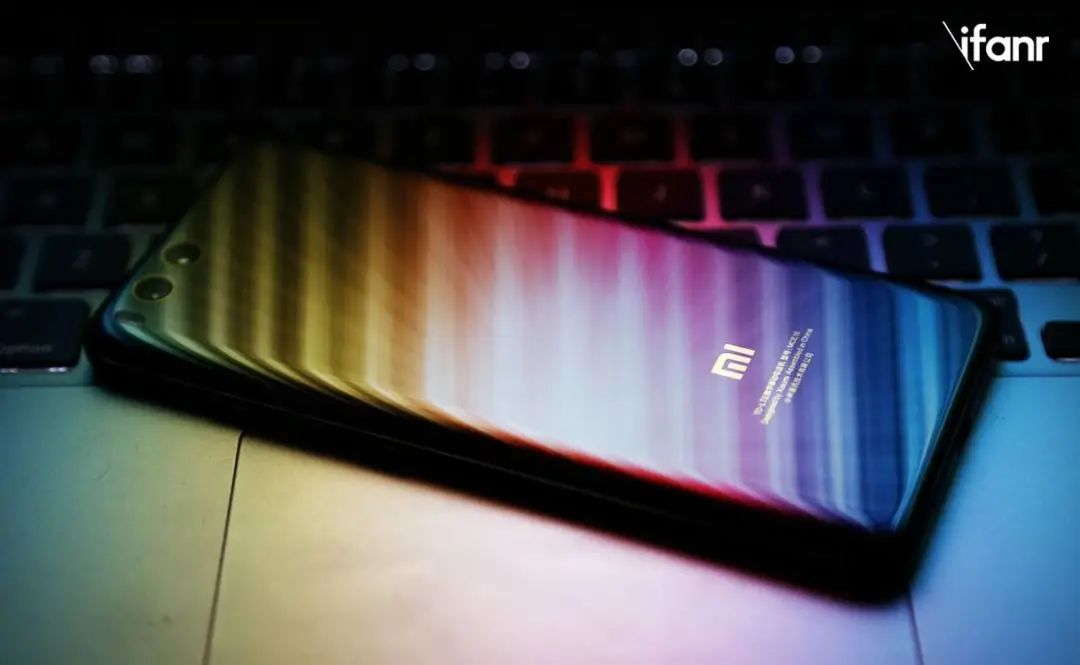 Xiaomi 6. The Snapdragon 835 adopted a (4 + 4) Kryo280 architecture, with a large core frequency of 2.45GHz and a small core frequency of 1.9GHz, manufactured using Samsung’s 10nm process, achieving a 27% performance improvement over the Snapdragon 820 while reducing the chip size by 30%. Powerful capabilities became the foundation for Snapdragon’s multiple functions. This generation of SoC supported 4K resolution screens, UFS 2.1, LPDDR4x four-channel memory, dual 14bit ISP (Image Signal Processor), and QC 4.0 fast charging, marking the prototype of Snapdragon’s mobile computing platform. Based on the Snapdragon 835, Qualcomm continuously refined its technology in the following years, launching the Snapdragon 845 and Snapdragon 855 SoCs, and eventually, we welcomed the 5G era with the Snapdragon 865 mobile platform.Major Advance into the 5G Era: Snapdragon 865/865 Plus (2019) One of the biggest selling points of the Snapdragon 865 is its compatibility with the Snapdragon X55 5G modem, supporting most frequency combinations worldwide, such as millimeter wave and TDD/FDD frequencies below 6GHz, as well as non-standalone (NSA) and standalone (SA) networking, dynamic spectrum sharing (DSS), global 5G roaming, and multi-SIM card designs. Additionally, it boasts a peak downlink rate far exceeding its competitors at 7.5Gbps, leading people to exclaim, “Buy the modem, get the chip for free.” Beyond 5G networks, the Snapdragon 865 adopted a “triple-cluster” architecture design, maintaining the “1+3+4” core architecture that has been used in the latest generation of Snapdragon mobile platforms, and upgraded the graphics processor to Adreno 650. This generation of SoC also supports capturing 200-megapixel photos and recording up to 8K/30fps videos, while enhancing support for screen refresh rates from the previous generation’s 90Hz to a whopping 144Hz.
Xiaomi 6. The Snapdragon 835 adopted a (4 + 4) Kryo280 architecture, with a large core frequency of 2.45GHz and a small core frequency of 1.9GHz, manufactured using Samsung’s 10nm process, achieving a 27% performance improvement over the Snapdragon 820 while reducing the chip size by 30%. Powerful capabilities became the foundation for Snapdragon’s multiple functions. This generation of SoC supported 4K resolution screens, UFS 2.1, LPDDR4x four-channel memory, dual 14bit ISP (Image Signal Processor), and QC 4.0 fast charging, marking the prototype of Snapdragon’s mobile computing platform. Based on the Snapdragon 835, Qualcomm continuously refined its technology in the following years, launching the Snapdragon 845 and Snapdragon 855 SoCs, and eventually, we welcomed the 5G era with the Snapdragon 865 mobile platform.Major Advance into the 5G Era: Snapdragon 865/865 Plus (2019) One of the biggest selling points of the Snapdragon 865 is its compatibility with the Snapdragon X55 5G modem, supporting most frequency combinations worldwide, such as millimeter wave and TDD/FDD frequencies below 6GHz, as well as non-standalone (NSA) and standalone (SA) networking, dynamic spectrum sharing (DSS), global 5G roaming, and multi-SIM card designs. Additionally, it boasts a peak downlink rate far exceeding its competitors at 7.5Gbps, leading people to exclaim, “Buy the modem, get the chip for free.” Beyond 5G networks, the Snapdragon 865 adopted a “triple-cluster” architecture design, maintaining the “1+3+4” core architecture that has been used in the latest generation of Snapdragon mobile platforms, and upgraded the graphics processor to Adreno 650. This generation of SoC also supports capturing 200-megapixel photos and recording up to 8K/30fps videos, while enhancing support for screen refresh rates from the previous generation’s 90Hz to a whopping 144Hz.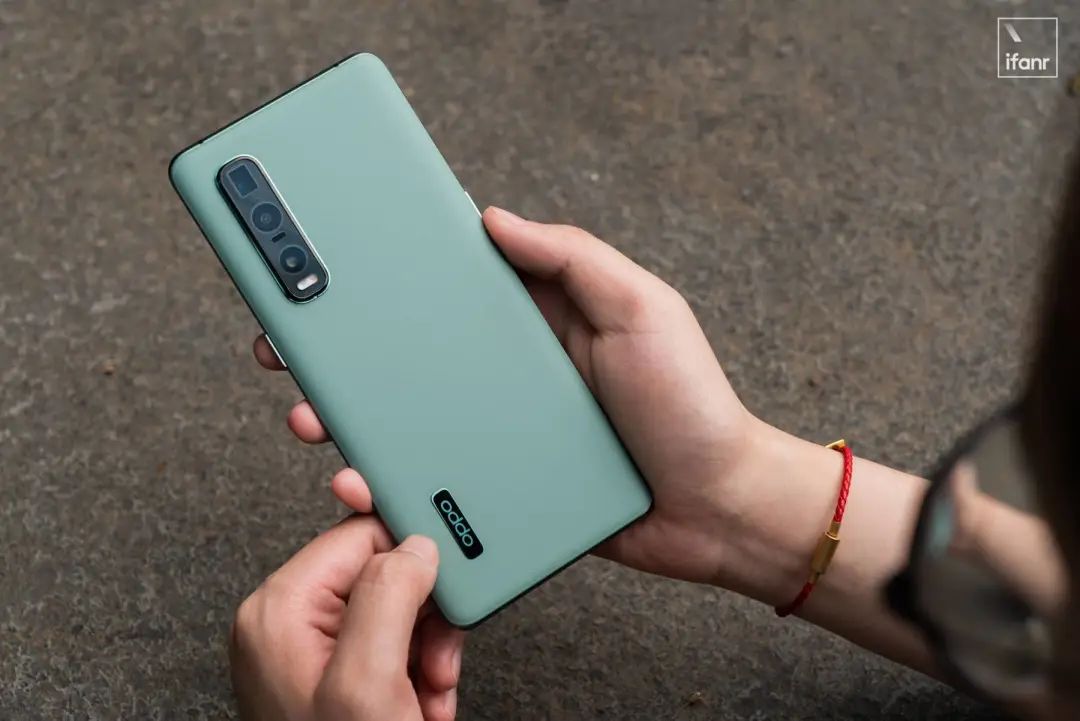 OPPO Find X2 Pro Bamboo Green Edition. From that year on, high refresh rates were no longer a “privilege” exclusive to top flagships, but became a standard feature across all price ranges, greatly enhancing consumer experience. The perception of high refresh rates is much stronger than simply increasing pixel density. Representative models of the Snapdragon 865 include the Samsung Galaxy S20 series, OnePlus 8 series, OPPO Find X2, and Xiaomi 10 series. By this time, domestic brands had become the main force in the Android camp.5G Begins to Become Standard: Snapdragon 888/888 Plus/870 (2020) Launched at the end of 2020, the Qualcomm Snapdragon 888 was the first Snapdragon mobile platform to adopt Samsung’s 5nm process technology and integrated the Snapdragon X60 5G modem. The octa-core triple-cluster architecture remained unchanged, with the Cortex-X1 big core reaching a maximum frequency of 2.84GHz, and the graphics processor upgraded to Adreno 660, improving graphics rendering speed by 35%. Additionally, the Snapdragon 888 supported QC 5.0, with flagship phone fast charging power reaching the hundred-watt level. Qualcomm invested significant effort into AI capabilities for this generation of SoC, integrating the sixth-generation AI engine, with the new Hexagon 780 processor capable of performing 26 trillion operations per second (26 TOPS). With the help of the AI engine, artificial intelligence played an increasingly important role in mobile imaging, making computational photography a major promotional point for flagship phones that year.
OPPO Find X2 Pro Bamboo Green Edition. From that year on, high refresh rates were no longer a “privilege” exclusive to top flagships, but became a standard feature across all price ranges, greatly enhancing consumer experience. The perception of high refresh rates is much stronger than simply increasing pixel density. Representative models of the Snapdragon 865 include the Samsung Galaxy S20 series, OnePlus 8 series, OPPO Find X2, and Xiaomi 10 series. By this time, domestic brands had become the main force in the Android camp.5G Begins to Become Standard: Snapdragon 888/888 Plus/870 (2020) Launched at the end of 2020, the Qualcomm Snapdragon 888 was the first Snapdragon mobile platform to adopt Samsung’s 5nm process technology and integrated the Snapdragon X60 5G modem. The octa-core triple-cluster architecture remained unchanged, with the Cortex-X1 big core reaching a maximum frequency of 2.84GHz, and the graphics processor upgraded to Adreno 660, improving graphics rendering speed by 35%. Additionally, the Snapdragon 888 supported QC 5.0, with flagship phone fast charging power reaching the hundred-watt level. Qualcomm invested significant effort into AI capabilities for this generation of SoC, integrating the sixth-generation AI engine, with the new Hexagon 780 processor capable of performing 26 trillion operations per second (26 TOPS). With the help of the AI engine, artificial intelligence played an increasingly important role in mobile imaging, making computational photography a major promotional point for flagship phones that year. vivo X70 Pro+. In addition to the assistance of artificial intelligence in computational photography, the Snapdragon 888 itself also possessed impressive imaging capabilities, being the first Snapdragon chip to support three ISPs. Its computing power was so strong that it could simultaneously record three 4K HDR videos, and it also supported triple concurrency, allowing three different focal lengths and pixel levels to operate simultaneously in the background, ready for user calls, making lens switching smoother. At this point, Snapdragon had become the undisputed leader in the mobile phone field, an essential option for top flagships in the Android camp. Familiar models include OPPO Find X3 Pro, OnePlus 9 Pro, and vivo X70 Pro, all of which prominently featured imaging capabilities on their promotional pages.
vivo X70 Pro+. In addition to the assistance of artificial intelligence in computational photography, the Snapdragon 888 itself also possessed impressive imaging capabilities, being the first Snapdragon chip to support three ISPs. Its computing power was so strong that it could simultaneously record three 4K HDR videos, and it also supported triple concurrency, allowing three different focal lengths and pixel levels to operate simultaneously in the background, ready for user calls, making lens switching smoother. At this point, Snapdragon had become the undisputed leader in the mobile phone field, an essential option for top flagships in the Android camp. Familiar models include OPPO Find X3 Pro, OnePlus 9 Pro, and vivo X70 Pro, all of which prominently featured imaging capabilities on their promotional pages. In the future, Snapdragon will be ubiquitous. By 2022, the Snapdragon flagship mobile platform adopted a new naming convention, abandoning the original Snapdragon 800 series naming in favor of the simpler Snapdragon 8 Gen 1, or simply Snapdragon 8. The new series name also signifies a new product strategy. In terms of performance, Snapdragon 8 remains powerful, featuring one Cortex-X2 3.0GHz super core, three Cortex-A710 2.5GHz big cores, and four Cortex-A510 1.8GHz small cores, forming a familiar triple-cluster octa-core architecture with more reasonable performance scheduling strategies, yielding impressive results.
In the future, Snapdragon will be ubiquitous. By 2022, the Snapdragon flagship mobile platform adopted a new naming convention, abandoning the original Snapdragon 800 series naming in favor of the simpler Snapdragon 8 Gen 1, or simply Snapdragon 8. The new series name also signifies a new product strategy. In terms of performance, Snapdragon 8 remains powerful, featuring one Cortex-X2 3.0GHz super core, three Cortex-A710 2.5GHz big cores, and four Cortex-A510 1.8GHz small cores, forming a familiar triple-cluster octa-core architecture with more reasonable performance scheduling strategies, yielding impressive results.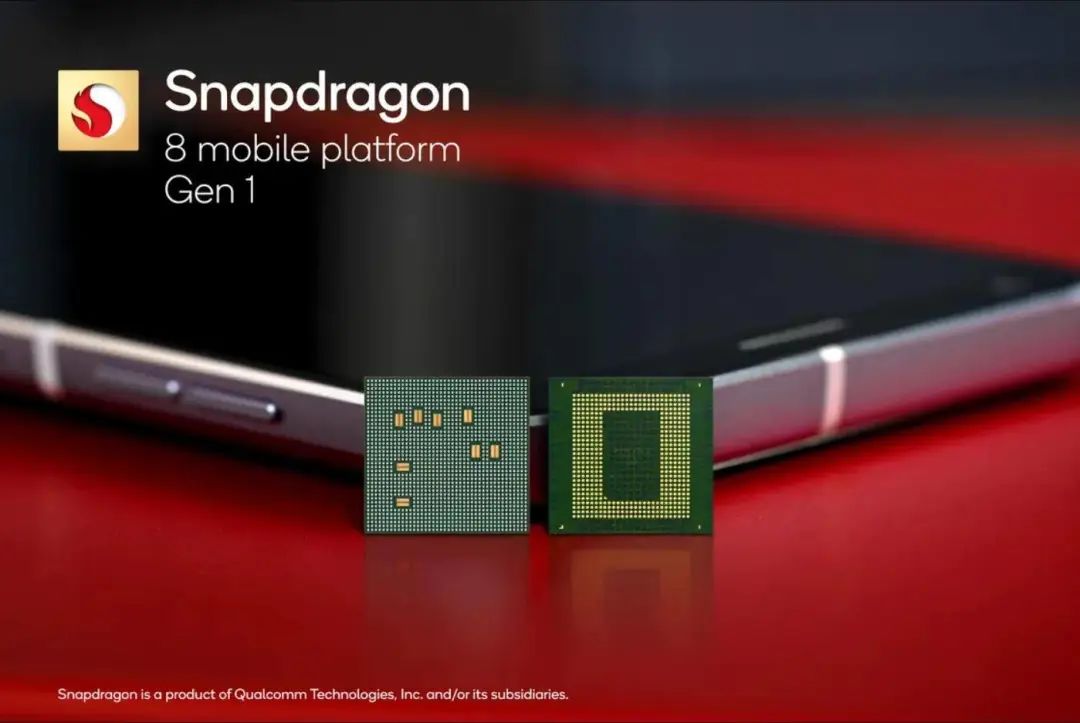 The new Adreno graphics processor has improved rendering capabilities by 30%, which has been validated in our tests. For high-load games like Genshin Impact, the Snapdragon 8 can maintain stable frame rates for extended periods, and with multiple optimizations from Vulkan, it can even enhance mobile gaming performance by 60%. Based on this performance, Snapdragon 8 introduced the fourth generation of Snapdragon Elite Gaming technology, which includes VRS Pro (Variable Rate Shading Pro), Adreno Frame Motion Engine, and stereoscopic rendering, among other new technologies aimed at enhancing gaming performance. Additionally, Snapdragon launched Snapdragon Sight imaging technology, which encompasses a complete set of imaging enhancement technologies, including 18-bit ISP, 8K HDR, and super multi-frame engines, all aimed at elevating imaging capabilities, allowing capable manufacturers to develop better camera functions, and enabling skilled users to capture higher-quality photos. In terms of overall imaging capabilities, Snapdragon has taken a lead over other chip manufacturers, making terminal manufacturers more willing to prioritize Snapdragon chips.
The new Adreno graphics processor has improved rendering capabilities by 30%, which has been validated in our tests. For high-load games like Genshin Impact, the Snapdragon 8 can maintain stable frame rates for extended periods, and with multiple optimizations from Vulkan, it can even enhance mobile gaming performance by 60%. Based on this performance, Snapdragon 8 introduced the fourth generation of Snapdragon Elite Gaming technology, which includes VRS Pro (Variable Rate Shading Pro), Adreno Frame Motion Engine, and stereoscopic rendering, among other new technologies aimed at enhancing gaming performance. Additionally, Snapdragon launched Snapdragon Sight imaging technology, which encompasses a complete set of imaging enhancement technologies, including 18-bit ISP, 8K HDR, and super multi-frame engines, all aimed at elevating imaging capabilities, allowing capable manufacturers to develop better camera functions, and enabling skilled users to capture higher-quality photos. In terms of overall imaging capabilities, Snapdragon has taken a lead over other chip manufacturers, making terminal manufacturers more willing to prioritize Snapdragon chips. iQOO 9 Pro. Since the introduction of the SoC concept with the Snapdragon 820, Snapdragon has continuously sought breakthroughs beyond CPU and GPU, focusing on features such as multi-ISP, artificial intelligence, fast charging, 5G modems, digital audio, and data security. These have become the key features that Snapdragon has emphasized in later stages, as with CPU performance reaching a certain height, simple CPU performance improvements no longer significantly enhance user experience. Realizing this, Snapdragon has found new directions for development. The integration capabilities accumulated over the years have helped Snapdragon explore new boundaries and seek evolution across multiple dimensions, ultimately transforming into a more complete mobile platform in the Snapdragon 8 era. Looking back, it is Qualcomm’s continuous adjustments and advancements throughout the smartphone development process that have created the current Snapdragon brand. Today, Snapdragon is no longer confined to the mobile phone sector; it has been cultivating in automotive, XR, and PC fields for many years, growing into an independent brand under Qualcomm that cannot be ignored. We will undoubtedly see Snapdragon’s presence in more forms of consumer products, and this dragon will continue to write more miracles in the future.
iQOO 9 Pro. Since the introduction of the SoC concept with the Snapdragon 820, Snapdragon has continuously sought breakthroughs beyond CPU and GPU, focusing on features such as multi-ISP, artificial intelligence, fast charging, 5G modems, digital audio, and data security. These have become the key features that Snapdragon has emphasized in later stages, as with CPU performance reaching a certain height, simple CPU performance improvements no longer significantly enhance user experience. Realizing this, Snapdragon has found new directions for development. The integration capabilities accumulated over the years have helped Snapdragon explore new boundaries and seek evolution across multiple dimensions, ultimately transforming into a more complete mobile platform in the Snapdragon 8 era. Looking back, it is Qualcomm’s continuous adjustments and advancements throughout the smartphone development process that have created the current Snapdragon brand. Today, Snapdragon is no longer confined to the mobile phone sector; it has been cultivating in automotive, XR, and PC fields for many years, growing into an independent brand under Qualcomm that cannot be ignored. We will undoubtedly see Snapdragon’s presence in more forms of consumer products, and this dragon will continue to write more miracles in the future.
Click “View”
Is our greatest motivation
